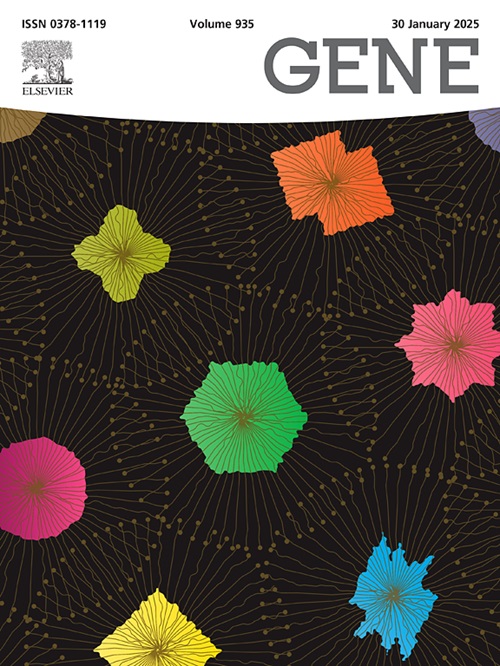miR-6760-5p suppresses neoangiogenesis by targeting Yes-associated protein 1 in patients with moyamoya disease undergoing indirect revascularization
IF 2.6
3区 生物学
Q2 GENETICS & HEREDITY
引用次数: 0
Abstract
Objective
The aim of this research was to investigate the specific regulatory role of miR-6760-5p in angiogenesis in moyamoya disease.
Methods
HUVECs were transfected with miR-6760-5p inhibitor and mimics fragments, then subjected to assays for cell proliferation, migration, and tube formation. Subsequently, downstream target genes of miR-6760-5p were predicted and the protein expression levels of these genes were evaluated. The presence of miR-6760-5p and YAP1 was verified by a dual luciferase reporter gene test, followed by an assessment of the effects of YAP1 and miR-6760-5p on the HUVECs.
Results
Comparatively to the control group, increased expression of miR-6760-5p decreased cell growth, movement, and tube formation. YAP1 gene was discovered as a target controlled by miR-6760-5p, with subsequent investigation confirming YAP1 as a gene regulated by miR-6760-5p. Additionally, miR-6760-5p was found to counteract the angiogenesis-promoting effect of YAP1.
Conclusion
The results of this research suggest a possible link between the miR-6760-5p gene found in the cerebrospinal fluid of individuals with moyamoya disease and the process of vascularization in this particular condition. The findings indicate that miR-6760-5p may be a new molecular indicator and potential target for the diagnosis of moyamoya disease.
miR-6760-5p通过靶向烟雾病患者间接血运重建术中的yes相关蛋白1抑制新血管生成。
目的:本研究旨在探讨miR-6760-5p在烟雾病血管生成中的具体调控作用。方法:用miR-6760-5p抑制剂和模拟物片段转染HUVECs,然后进行细胞增殖、迁移和管形成的检测。随后,预测miR-6760-5p的下游靶基因,并评估这些基因的蛋白表达水平。通过双荧光素酶报告基因测试验证了miR-6760-5p和YAP1的存在,随后评估了YAP1和miR-6760-5p对huvec的影响。结果:与对照组相比,miR-6760-5p表达增加可降低细胞生长、运动和成管。YAP1基因被发现是受miR-6760-5p调控的靶标,随后的研究证实YAP1是受miR-6760-5p调控的基因。此外,miR-6760-5p被发现可以抵消YAP1促进血管生成的作用。结论:本研究结果提示,烟雾病患者脑脊液中发现的miR-6760-5p基因与这种特殊情况下的血管化过程可能存在联系。提示miR-6760-5p可能成为烟雾病诊断的新分子指标和潜在靶点。
本文章由计算机程序翻译,如有差异,请以英文原文为准。
求助全文
约1分钟内获得全文
求助全文
来源期刊

Gene
生物-遗传学
CiteScore
6.10
自引率
2.90%
发文量
718
审稿时长
42 days
期刊介绍:
Gene publishes papers that focus on the regulation, expression, function and evolution of genes in all biological contexts, including all prokaryotic and eukaryotic organisms, as well as viruses.
 求助内容:
求助内容: 应助结果提醒方式:
应助结果提醒方式:


